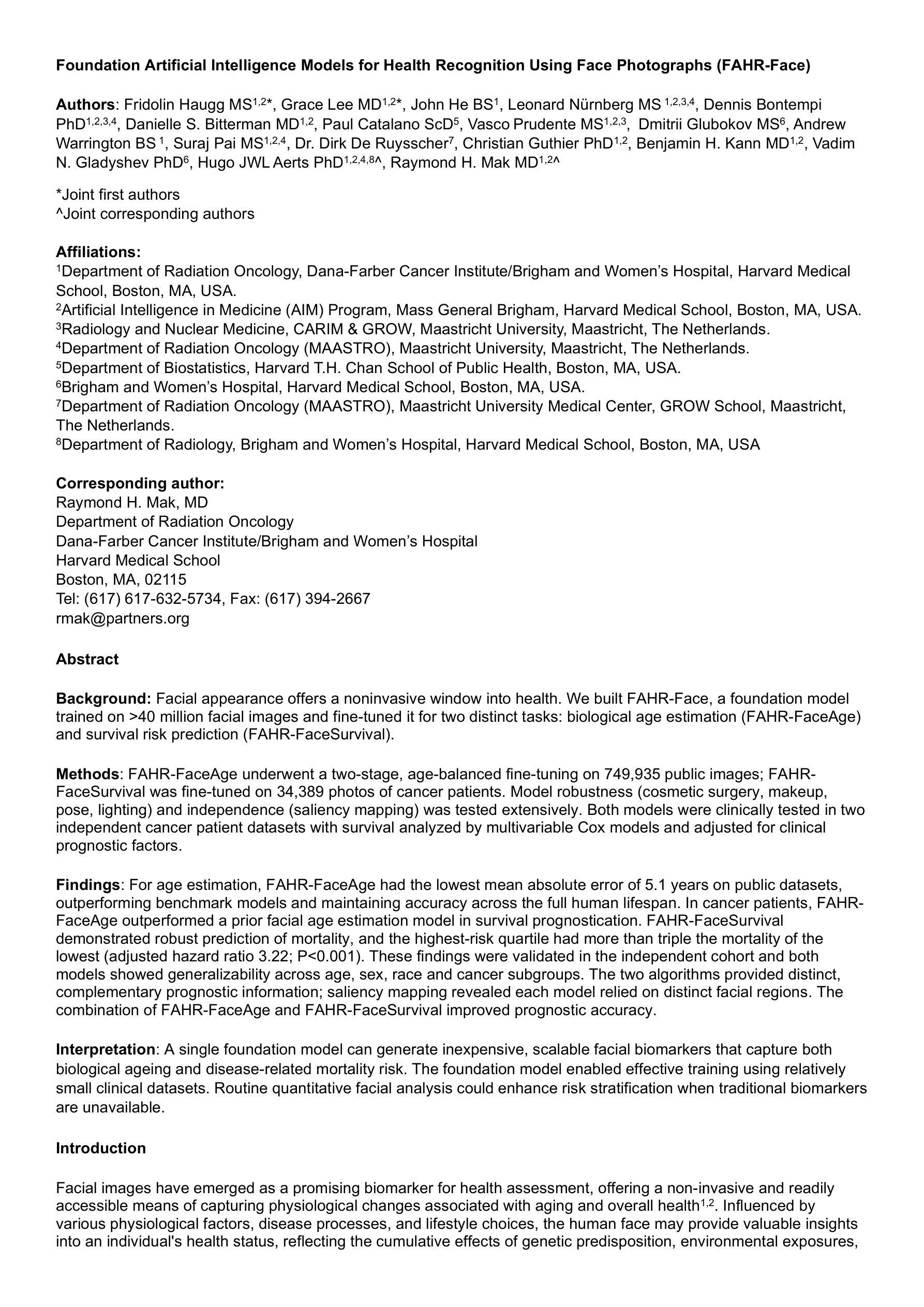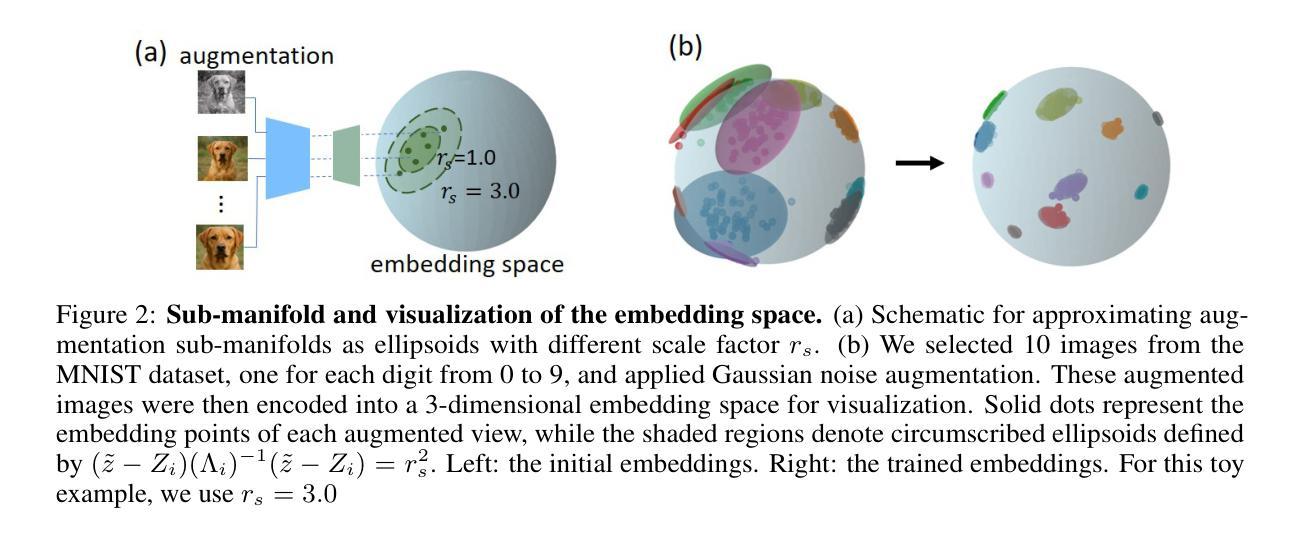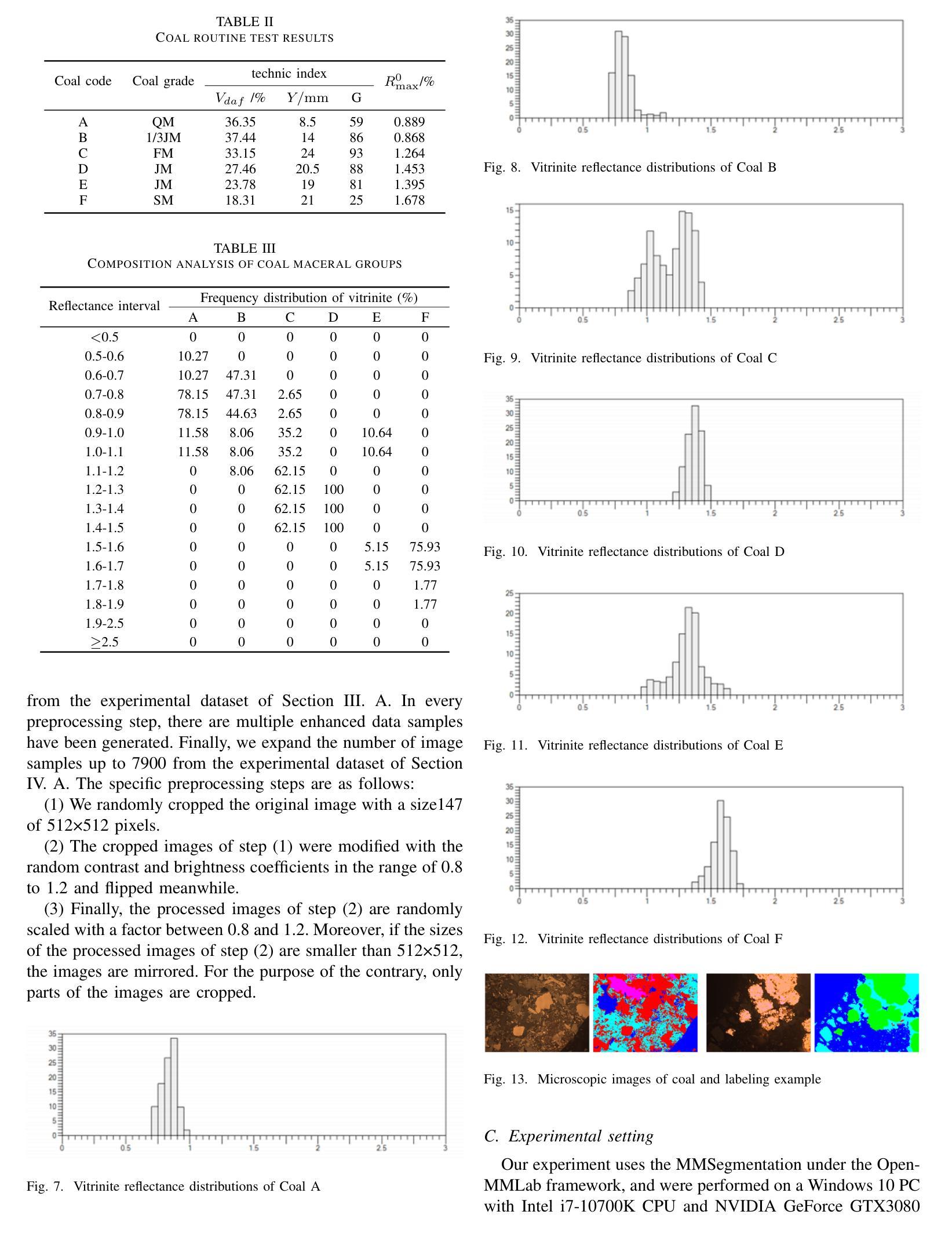⚠️ 以下所有内容总结都来自于 大语言模型的能力,如有错误,仅供参考,谨慎使用
🔴 请注意:千万不要用于严肃的学术场景,只能用于论文阅读前的初筛!
💗 如果您觉得我们的项目对您有帮助 ChatPaperFree ,还请您给我们一些鼓励!⭐️ HuggingFace免费体验
2025-06-22 更新
Foundation Artificial Intelligence Models for Health Recognition Using Face Photographs (FAHR-Face)
Authors:Fridolin Haugg, Grace Lee, John He, Leonard Nürnberg, Dennis Bontempi, Danielle S. Bitterman, Paul Catalano, Vasco Prudente, Dmitrii Glubokov, Andrew Warrington, Suraj Pai, Dirk De Ruysscher, Christian Guthier, Benjamin H. Kann, Vadim N. Gladyshev, Hugo JWL Aerts, Raymond H. Mak
Background: Facial appearance offers a noninvasive window into health. We built FAHR-Face, a foundation model trained on >40 million facial images and fine-tuned it for two distinct tasks: biological age estimation (FAHR-FaceAge) and survival risk prediction (FAHR-FaceSurvival). Methods: FAHR-FaceAge underwent a two-stage, age-balanced fine-tuning on 749,935 public images; FAHR-FaceSurvival was fine-tuned on 34,389 photos of cancer patients. Model robustness (cosmetic surgery, makeup, pose, lighting) and independence (saliency mapping) was tested extensively. Both models were clinically tested in two independent cancer patient datasets with survival analyzed by multivariable Cox models and adjusted for clinical prognostic factors. Findings: For age estimation, FAHR-FaceAge had the lowest mean absolute error of 5.1 years on public datasets, outperforming benchmark models and maintaining accuracy across the full human lifespan. In cancer patients, FAHR-FaceAge outperformed a prior facial age estimation model in survival prognostication. FAHR-FaceSurvival demonstrated robust prediction of mortality, and the highest-risk quartile had more than triple the mortality of the lowest (adjusted hazard ratio 3.22; P<0.001). These findings were validated in the independent cohort and both models showed generalizability across age, sex, race and cancer subgroups. The two algorithms provided distinct, complementary prognostic information; saliency mapping revealed each model relied on distinct facial regions. The combination of FAHR-FaceAge and FAHR-FaceSurvival improved prognostic accuracy. Interpretation: A single foundation model can generate inexpensive, scalable facial biomarkers that capture both biological ageing and disease-related mortality risk. The foundation model enabled effective training using relatively small clinical datasets.
背景:面部形态为我们提供了一个无创的健康窗口。我们构建了FAHR-Face这一基础模型,其训练样本包含超过4千万张面部图像,并针对两个特定任务进行了微调:生物年龄估计(FAHR-FaceAge)和生存风险预测(FAHR-FaceSurvival)。方法:对FAHR-FaceAge进行两阶段年龄平衡的微调,所用图像为公众数据库中的74万张图片;对FAHR-FaceSurvival进行微调时使用的是癌症患者的3万张照片。该模型的稳健性(如面对整容手术、化妆、姿态、光线变化的稳健性)和独立性(显著性映射)经过了广泛测试。两个模型都在两个独立的癌症患者数据集中进行了临床测试,通过多变量Cox模型分析生存情况,并调整了临床预后因素。结果:在公开数据集上,FAHR-FaceAge在年龄估计方面的平均绝对误差最低,仅为5.1年,超过了基准模型并在整个人生周期中保持了准确性。在癌症患者中,相较于之前的面部年龄预估模型,FAHR-FaceAge在生存预后预测中表现更好。FAHR-FaceSurvival在预测死亡率方面表现出稳健性,最高风险人群组的死亡率是最低风险组的三倍以上(调整后的危险比为3.22;P<0.001)。这些结论在独立人群中得到了验证,并且两个模型在年龄、性别、种族和癌症分组方面表现出可概括性。两种算法提供了独特且互补的预后信息;显著性映射表明每个模型都依赖于不同的面部区域。结合使用FAHR-FaceAge和FAHR-FaceSurvival提高了预后准确性。解读:单一基础模型可以生成价格低廉、规模化的面部生物标志物,这些标志物既能捕捉生物老化情况,又能反映与疾病相关的死亡风险。基础模型使用相对较小的临床数据集进行了有效的训练。
论文及项目相关链接
Summary:利用超过4千万张面部图像训练的FAHR-Face模型,可精细估算生物年龄并预测癌症患者的生存风险。模型通过两个阶段进行微调,并在公开数据集和癌症患者数据集上进行广泛测试,表现出卓越的性能和稳健性。该模型可为癌症患者的预后提供有价值的信息。
Key Takeaways:
- FAHR-Face模型基于超过40万张面部图像构建,可用于估计生物年龄和预测生存风险。
- 模型分为两个阶段进行微调,具有年龄平衡的特点。
- FAHR-Face模型在公开数据集上的年龄估计误差最低,表现出高准确性。
- 在癌症患者中,FAHR-FaceAge模型在生存预后方面表现优于先前的面部年龄估计模型。
- FAHR-FaceSurvival模型展示了强大的预测死亡风险能力,高风险组死亡率是低风险的三倍以上。
- 两个模型在独立队列中得到验证,并表现出跨年龄、性别、种族和癌症亚组的普遍性。
- 这两个算法提供了独特且互补的预后信息,结合使用可提高预后准确性。
点此查看论文截图


